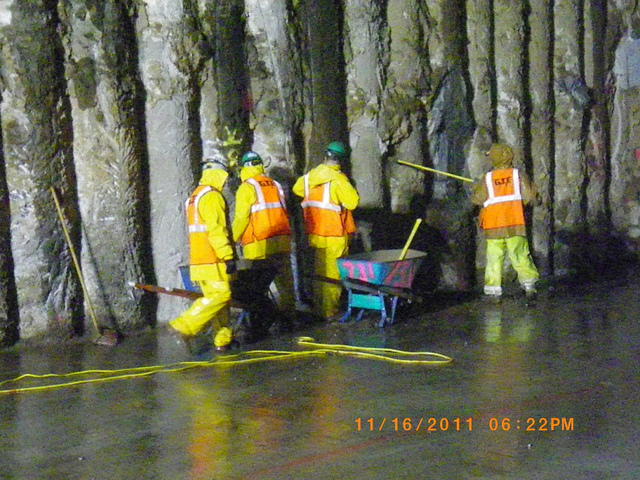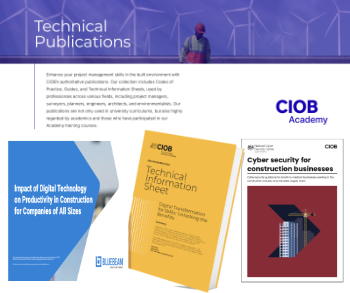Secant pile wall

|
| Image source: MTA Capital Construction. |
Piles are long, slender, columnar elements that can be driven into the ground to provide stability, such as in foundations. They are typically made from steel or reinforced concrete, or sometimes timber.
Pile walls can be used to create permanent or temporary retaining walls. They are formed by placing piles directly adjacent to one another. Pile walls can be either closely-spaced contiguous piles walls or secant pile walls.
Secant pile walls are formed by constructing reinforced concrete piles that interlock, and are often used as a cost-effective solution when short-term water retention is required. Secant piles are reinforced with either steel rebar or steel beams.
Typically, primary (female) piles are cast in situ, leaving space in between them. This is followed by secondary (male) piles being cut into the primary piles to form a continuous wall, generally with a typical interlock of around 150 mm.
Depending on the composition of the secondary piles, it can be hard/soft, hard/firm or hard/hard:
- Hard/soft uses a ‘soft’ cement-bentonite mix (typically 1 N/mm2) for the primary pile, and this is usually unreinforced. This composition generally does not provide full water-tightness.
- Hard/firm uses a weak mix concrete or full-strength mix concrete (typically 10 N/mm2). If the project requires the pile walls to be used for permanent works, a reinforced concrete lining may be required.
- Hard/hard is similar to hard/firm but the primary piles are typically of higher-strength concrete and may be reinforced. This can provide an alternative to diaphragm wall construction.
The advantages of secant pile walls are that, compared to sheet piling methods, they can provide greater wall stiffness. They are also capable of being installed in low headroom and in difficult ground conditions.
The disadvantages are that vertical tolerances may be difficult to achieve for deep piles, as is total waterproofing in the joints between piles. They will also generally cost more than sheet piles.
[edit] Related articles on Designing Buildings
Featured articles and news
CIOB Construction Manager of the Year 2025
Just one of the winners at the CIOB Awards 2025.
Call for independent National Grenfell oversight mechanism
MHCLG share findings of Building Safety Inquiry in letter to Secretary of State and Minister for Building Safety.
The Architectural Technology Awards
AT Awards now open for this the sixth decade of CIAT.
50th Golden anniversary ECA Edmundson awards
Deadline for submissions Friday 30 May 2025.
The benefits of precast, off-site foundation systems
Top ten benefits of this notable innovation.
Encouraging individuals to take action saving water at home, work, and in their communities.
Takes a community to support mental health and wellbeing
The why of becoming a Mental Health Instructor explained.
Mental health awareness week 13-18 May
The theme is communities, they can provide a sense of belonging, safety, support in hard times, and a sense purpose.
Mental health support on the rise but workers still struggling
CIOB Understanding Mental Health in the Built Environment 2025 shows.
Design and construction material libraries
Material, sample, product or detail libraries a key component of any architectural design practice.
Construction Products Reform Green Paper and Consultation
Still time to respond as consultation closes on 21 May 2025.
Resilient façade systems for smog reduction in Shanghai
A technical approach using computer simulation and analysis of solar radiation, wind patterns, and ventilation.
Digital technology, transformation and cybersecurity
Supporting SMEs through Digitalisation in Construction.
Villa Wolf in Gubin, history and reconstruction. Book review.
Construction contract awards down one billion pounds
Decline over the past two months compared to the same period last year, follows the positive start to the year.
Editor's broadbrush view on forms of electrical heating in context.
The pace of heating change; BSRIA market intelligence
Electric Dreams, Boiler Realities.
New President of ECA announced
Ruth Devine MBE becomes the 112th President of the Electrical Contractors Association.
























